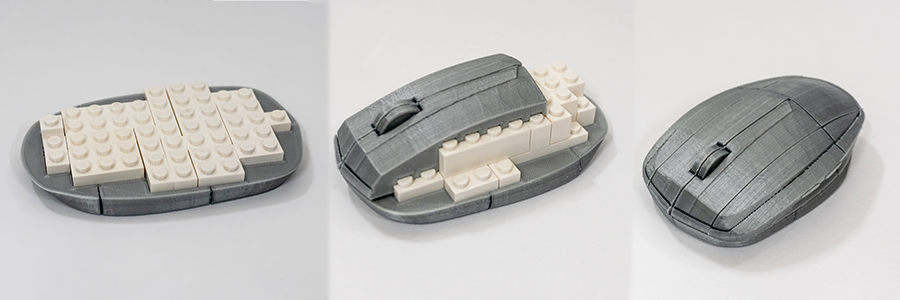The potential benefits of coupling LEGO and FDM printing in a hybrid prototyping have been shown through idealised simulations, however it needs to be feasible and practical to implement for it to be a useful approach to prototyping. This figure illustrates in 2D how a design can be prototyped out of LEGO and FDM printed parts.
There needs to be a new set of design rules that informs both the process planning and the designer on how to create the hybrid prototype.
Design for Fabrication (DfF)
These rules are called Design for Fabrication (DfF) and they merge the Design for Additive Manufacture (DfAM) and LEGO assembly best practice. The image below shows how the three considerations (Technical, Process and Design) feed into the resulting hybrid prototype.
The DfF rules include:
- Assembly/Disassembly requirements, must be able to be put together.
- Structural integrity of the prototype, must hold its own weight.
- Overall size and minimum dimensions
- Size/Number of the segmented FDM printed parts
- Location of split planes and how to segment the FDM surface
- Level of fidelity, can the amount be printing be reduced by sacrificing fidelity in some areas.
Implementation in a Computer Mouse
DfF was implemented in a simple computer mouse. The picture below shows the stages of constructing the hybrid prototype computer mouse, showing that the implementation is both feasible and practical. However there is still some work to be done on how to segment the 3D printed parts and where to put the split planes. 

